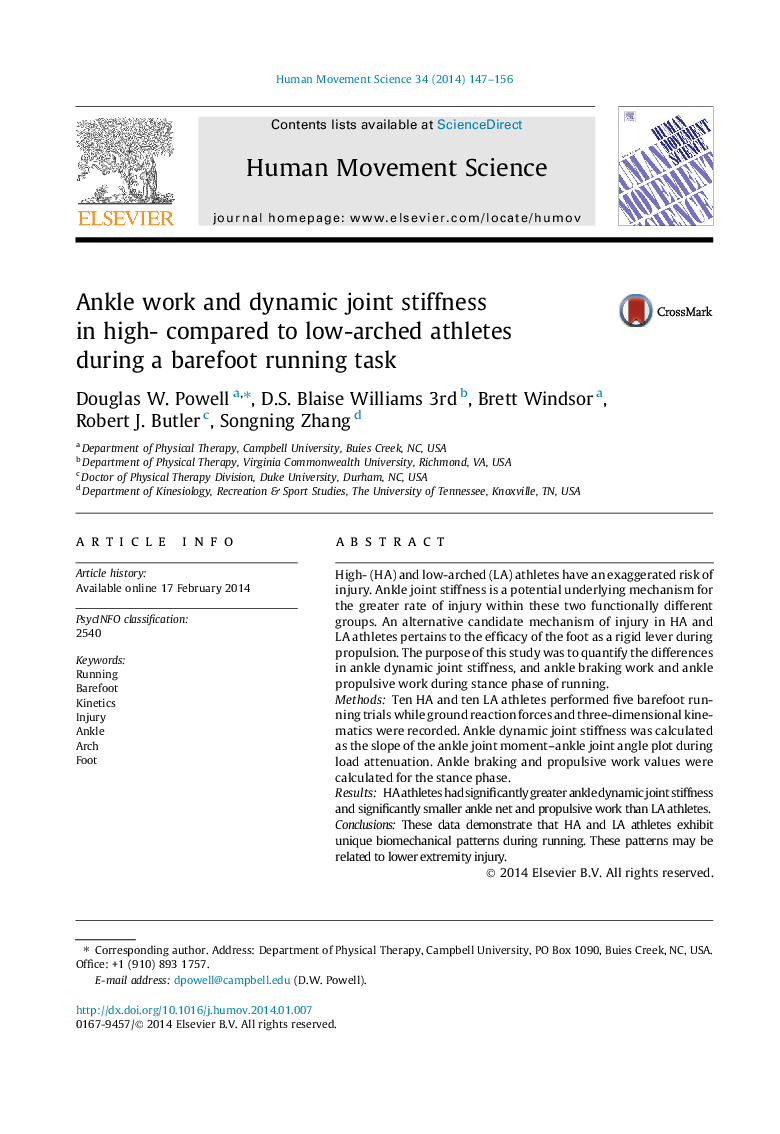| کد مقاله | کد نشریه | سال انتشار | مقاله انگلیسی | نسخه تمام متن |
|---|---|---|---|---|
| 928418 | 1474231 | 2014 | 10 صفحه PDF | دانلود رایگان |
• High- compared to low-arched athletes exhibit greater ankle dynamic joint stiffness.
• Low- compared to high-arched athletes exhibit greater net and propulsive ankle work.
• High-arched compared to low-arched athletes exhibit greater foot–ankle lever arms.
High- (HA) and low-arched (LA) athletes have an exaggerated risk of injury. Ankle joint stiffness is a potential underlying mechanism for the greater rate of injury within these two functionally different groups. An alternative candidate mechanism of injury in HA and LA athletes pertains to the efficacy of the foot as a rigid lever during propulsion. The purpose of this study was to quantify the differences in ankle dynamic joint stiffness, and ankle braking work and ankle propulsive work during stance phase of running.MethodsTen HA and ten LA athletes performed five barefoot running trials while ground reaction forces and three-dimensional kinematics were recorded. Ankle dynamic joint stiffness was calculated as the slope of the ankle joint moment–ankle joint angle plot during load attenuation. Ankle braking and propulsive work values were calculated for the stance phase.ResultsHA athletes had significantly greater ankle dynamic joint stiffness and significantly smaller ankle net and propulsive work than LA athletes.ConclusionsThese data demonstrate that HA and LA athletes exhibit unique biomechanical patterns during running. These patterns may be related to lower extremity injury.
Journal: Human Movement Science - Volume 34, April 2014, Pages 147–156
